

Is Your Business Structure Holding You Back?
As a seasoned HR professional, you’ve likely witnessed the struggle many organizations face as they scale. Departments grow larger, processes become more complex, and decision-making slows. This is often a sign that the current business structure—whether it’s functional, matrix, or hierarchical—may no longer align with your company’s evolving needs. So, how do you overcome these challenges?
One answer lies in adopting a Divisional Organizational Structure—a model that offers flexibility, autonomy, and responsiveness to market demands. But what exactly is this structure, and why is it gaining traction among top-performing organizations in 2025?
Let’s dive into the details and explore how this structure can transform your business.
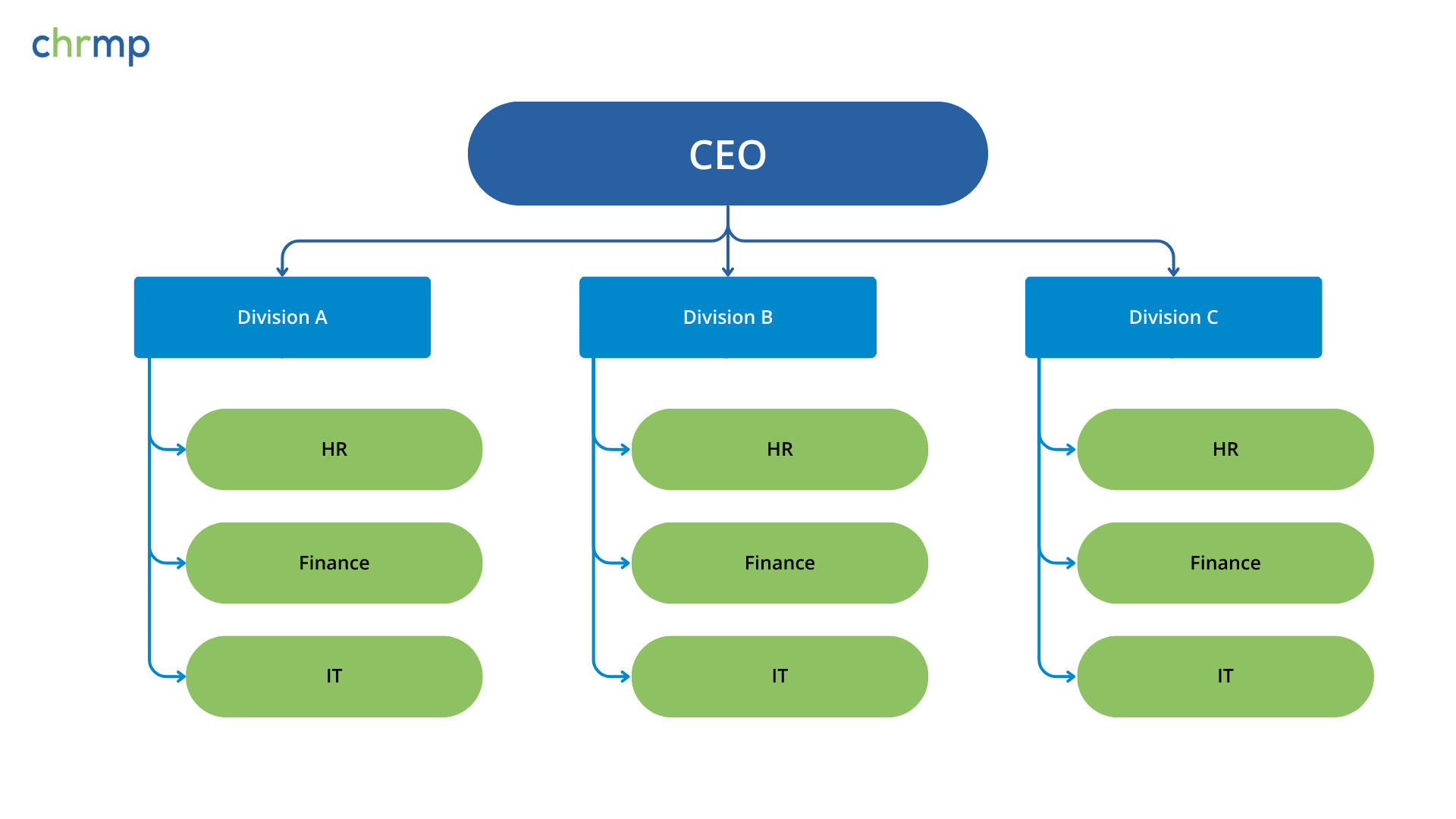
A Divisional Organizational Structure is a business model in which an organization is split into separate divisions, each responsible for specific products, markets, geographic regions, or processes. This structure is a departure from the traditional hierarchical organizational hierarchy, providing a more decentralized approach to business management.
In a divisional structure, each division functions almost like a self-contained entity, with its own leadership team, budgets, and resources. This autonomy allows divisions to be more responsive to changes in their specific market, improving efficiency and decision-making.
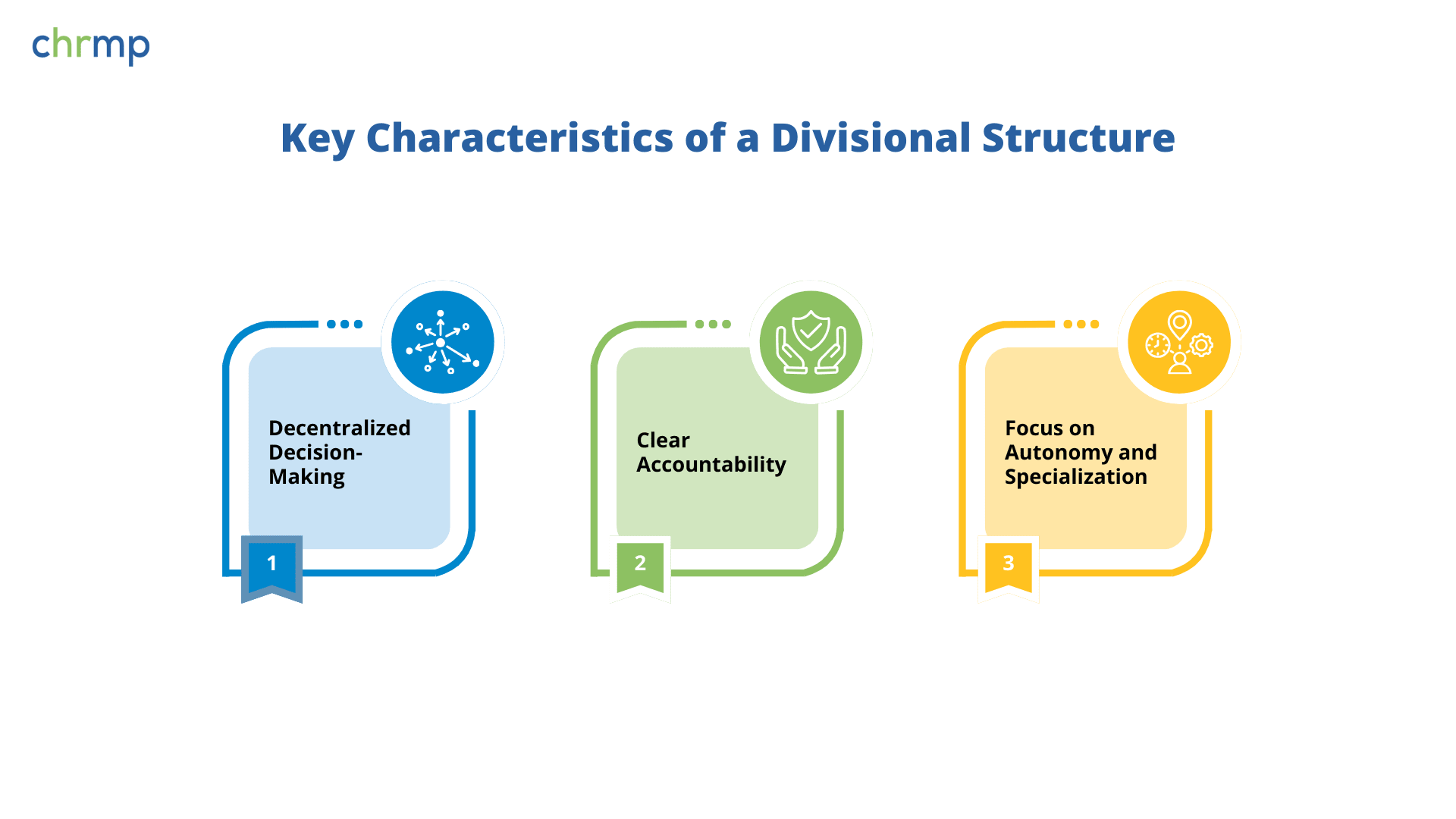
In the corporate structure of a divisional model, divisions are typically based on key business criteria—whether that’s product lines, customer segments, geography, or operational processes. Each division is managed by a divisional head who reports to the top executives in the company, ensuring alignment with overall corporate strategy.
For instance, in a product-based divisional structure, each division is responsible for the development, production, and marketing of a specific product. The divisional head will oversee all aspects of that product’s lifecycle, from R&D to sales and customer service.
Divisional management allows organizations to:
This autonomy, while beneficial, requires strong alignment between divisions and the broader corporate strategy to avoid fragmentation.
Read: What is Organizational Development?
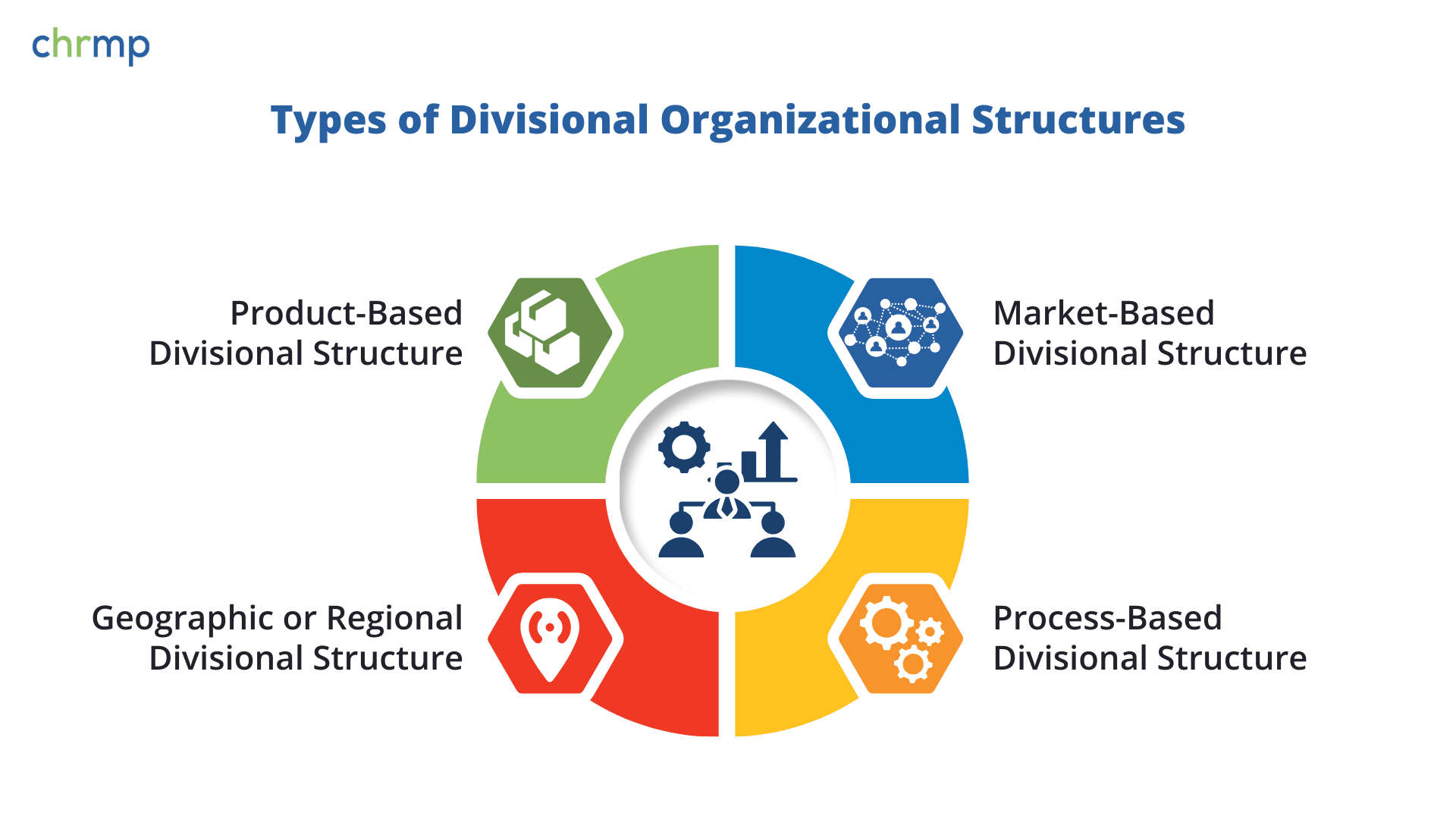
The types of divisional structures vary depending on the company’s priorities, size, and market environment. Here are the four most common structures in use today:
In a Product-Based Divisional Structure, an organization is divided into distinct divisions, each focused on a specific product or product line. Each division operates almost like a self-contained business unit, with full responsibility for its respective product’s development, marketing, sales, and overall success. This structure allows each division to specialize in its area, fostering deep expertise and agility in responding to market trends and consumer demands.
For example, in a company with multiple product offerings—such as electronics, apparel, and home goods—each division would oversee its own research and development (R&D), marketing campaigns, and sales strategies. By focusing exclusively on one product line, divisions can dedicate resources to innovation, ensuring their product stays competitive and aligned with consumer expectations.
The Product-Based Divisional Structure is particularly effective for companies with a broad portfolio of products, as it allows them to efficiently manage each product line’s lifecycle while promoting innovation and growth within each division. It also supports market differentiation, where each product line can tailor its approach to meet the unique needs of its customers.
Example: Procter & Gamble (P&G) operates with product-based divisions like Beauty, Grooming, Health Care, and Fabric & Home Care. Each division focuses on delivering innovations tailored to its product category, streamlining operations and boosting focus.
A Market-Based Divisional Structure organizes an organization into divisions based on specific customer segments or markets, allowing each division to focus exclusively on the unique needs, behaviors, and preferences of its target audience.
In this structure, each division is responsible for tailoring its products, marketing efforts, and sales strategies to meet the specific demands of its customer base. For example, a company that sells consumer electronics might have separate divisions for consumer electronics, business solutions, and enterprise technology. Each division would design specialized marketing campaigns, customer service experiences, and even product features, ensuring that they align with the distinct expectations of their respective customer segments.
The Market-Based Divisional Structure is ideal for organizations that operate in diverse industries or serve multiple customer segments. By organizing around customer types, companies can ensure they offer tailored solutions, driving better customer satisfaction, loyalty, and ultimately, business growth.
Example: Adobe has divisions such as Enterprise Solutions, Creative Professionals, and Consumer Products, each with specific marketing, sales, and product offerings for its targeted market.
A Geographic or Regional Divisional Structure is particularly suited for global businesses that operate across different countries, continents, or regions, each with distinct market dynamics, customer preferences, and regulatory environments. In this structure, the organization is divided into divisions based on geographic locations, such as North America, Europe, Asia-Pacific, or Latin America. Each division is responsible for managing operations within its specific region, ensuring that business activities are tailored to local needs while aligning with the overall corporate strategy.
The core strength of this structure lies in its ability to localize business operations. Since each division is dedicated to a specific geographic region, it can tailor products, marketing strategies, and sales efforts to better suit local customs, cultural preferences, and legal requirements. For example, a global beverage company can offer different product formulations, packaging, and marketing campaigns to suit the taste preferences and regulatory standards of different regions. In some countries, the company might introduce unique flavors or packaging options that resonate more with the local population.
Example: McDonald’s organizes its operations into divisions for North America, Europe, Asia-Pacific, and Latin America, ensuring that each region’s needs and challenges are addressed locally.
In a Process-Based Divisional Structure, the organization is divided into divisions based on key operational processes rather than products, markets, or geographic locations. This structure focuses on the efficiency of the company’s internal operations, making it especially common in manufacturing or service-based industries where workflow optimization and streamlining production are critical to maintaining competitiveness and ensuring customer satisfaction.
In this structure, each division is organized around a specific process or stage in the value chain, such as design, manufacturing, quality control, or customer service. For example, in a manufacturing company, divisions might be centered around production, logistics, and distribution, where each division is tasked with ensuring the efficiency and quality of their part of the process. Similarly, in service industries, divisions may focus on service delivery, customer support, or technical assistance, allowing each department to concentrate on its area of expertise.
The Process-Based Divisional Structure is invaluable for companies focused on optimizing specific workflows to achieve efficiency, quality control, and cost reduction. It’s particularly effective in manufacturing, service delivery, or any business where process improvement is essential to staying competitive in the market.
Example: Boeing uses a process-based divisional structure with divisions for design, manufacturing, and quality control. Each division focuses on its area of expertise, driving operational excellence.
Read: 16 Key Principles of Organisation : Comprehensive Guide 2025
When implemented effectively, a divisional structure offers several strategic benefits that can significantly improve business efficiency and corporate management.
Key Benefits:
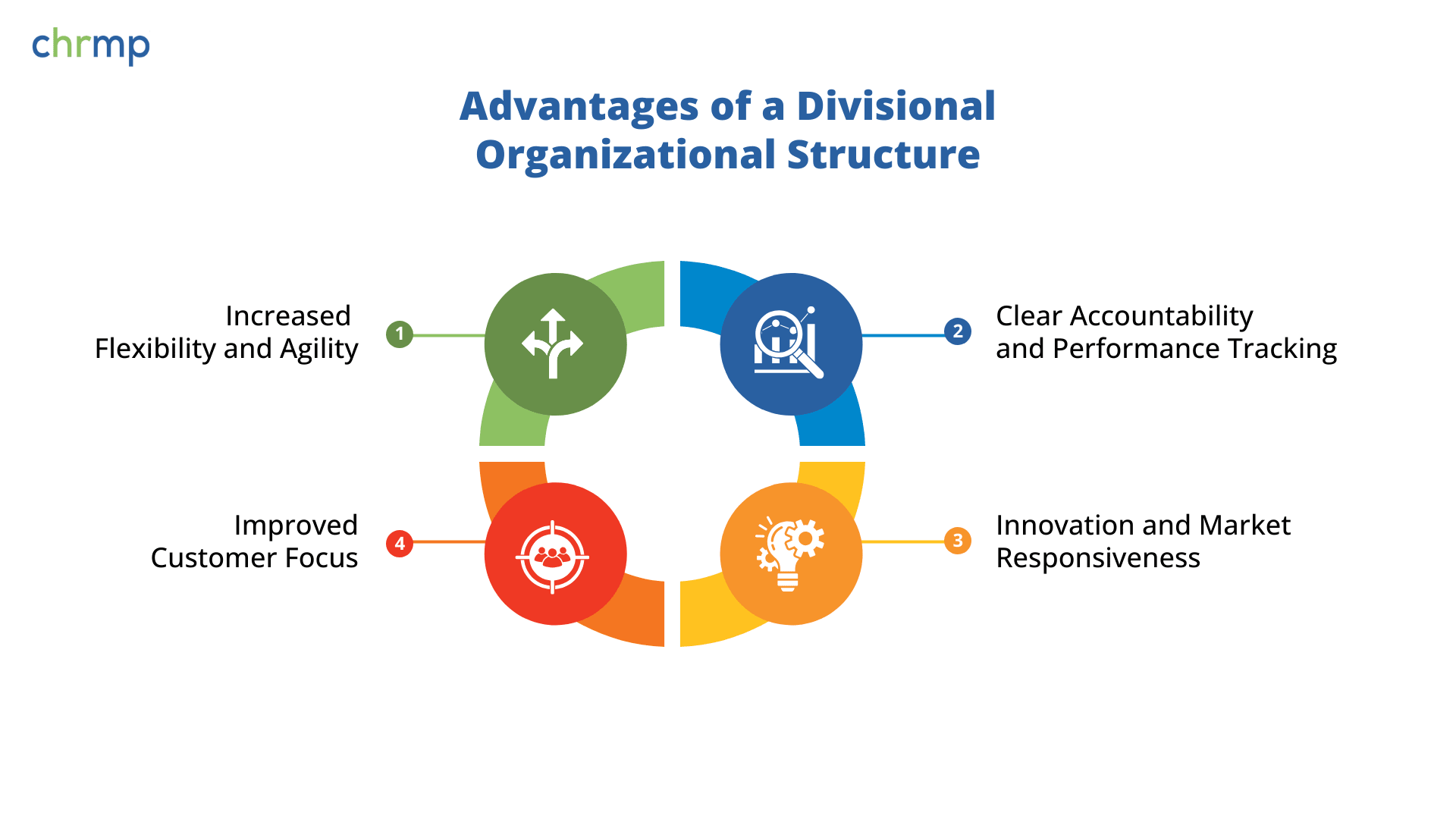
1. Increased Flexibility and Agility:
Divisions are empowered to make decisions quickly and independently, which allows for faster responses to market changes and customer needs.
2. Clear Accountability and Performance Tracking:
Since each division is responsible for its own performance, it becomes easier to track success metrics, identify growth opportunities, and address underperformance.
3. Innovation and Market Responsiveness:
Divisions with autonomy often foster creativity and new product development. The ability to focus on specific product lines or market segments accelerates innovation.
4. Improved Customer Focus:
By tailoring strategies to specific markets or products, divisional structures enhance customer satisfaction through specialized solutions.
While the divisional structure offers many advantages, it’s important to be aware of its potential downsides.
Key Challenges:
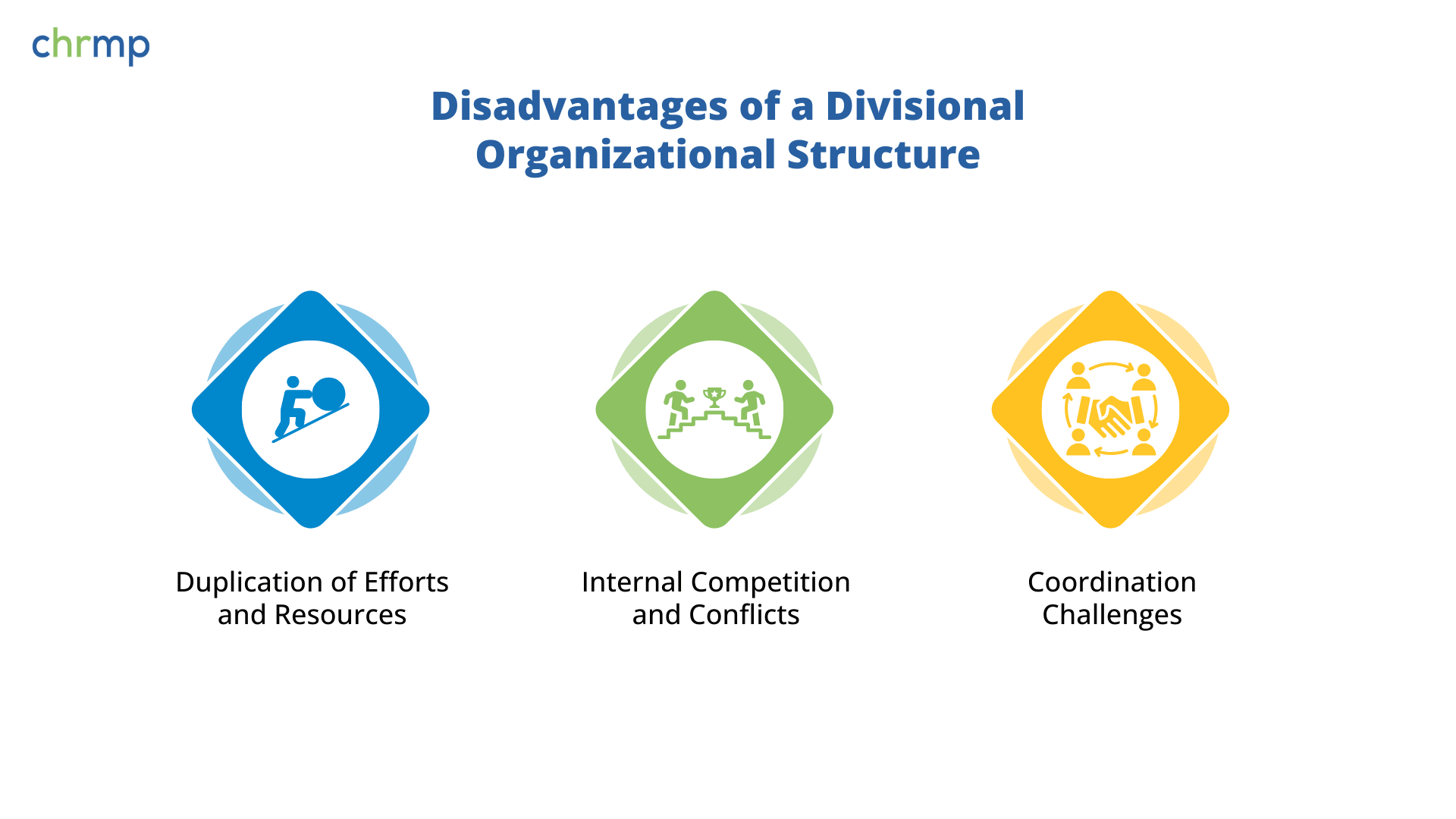
1. Duplication of Efforts and Resources:
Each division typically requires its own HR, finance, marketing, and IT departments, which can lead to resource redundancy and increased costs.
2. Internal Competition and Conflicts:
Divisions may compete for budget allocation, company resources, or market share, leading to friction and misalignment within the company.
3. Coordination Challenges:
Divisions, despite their autonomy, must collaborate to maintain a unified corporate strategy. Without effective communication, this can lead to silos and missed opportunities for cross-divisional synergy.
At its core, the difference between a functional structure and a divisional structure lies in how an organization is grouped and managed. Let’s break down how each structure works and its key differences.
A functional structure is one of the most common business structures used by companies. In this setup, the organization is divided into departments based on specific functions or expertise areas, such as HR, Marketing, Finance, and Operations. Each department is led by a functional manager who is responsible for its performance.
In contrast, a divisional structure organizes employees into separate divisions based on different products, markets, geographic locations, or processes. Each division is treated like an independent entity, with its own leadership, resources, and decision-making power. Divisions can focus on specific product lines, customer segments, or regions.
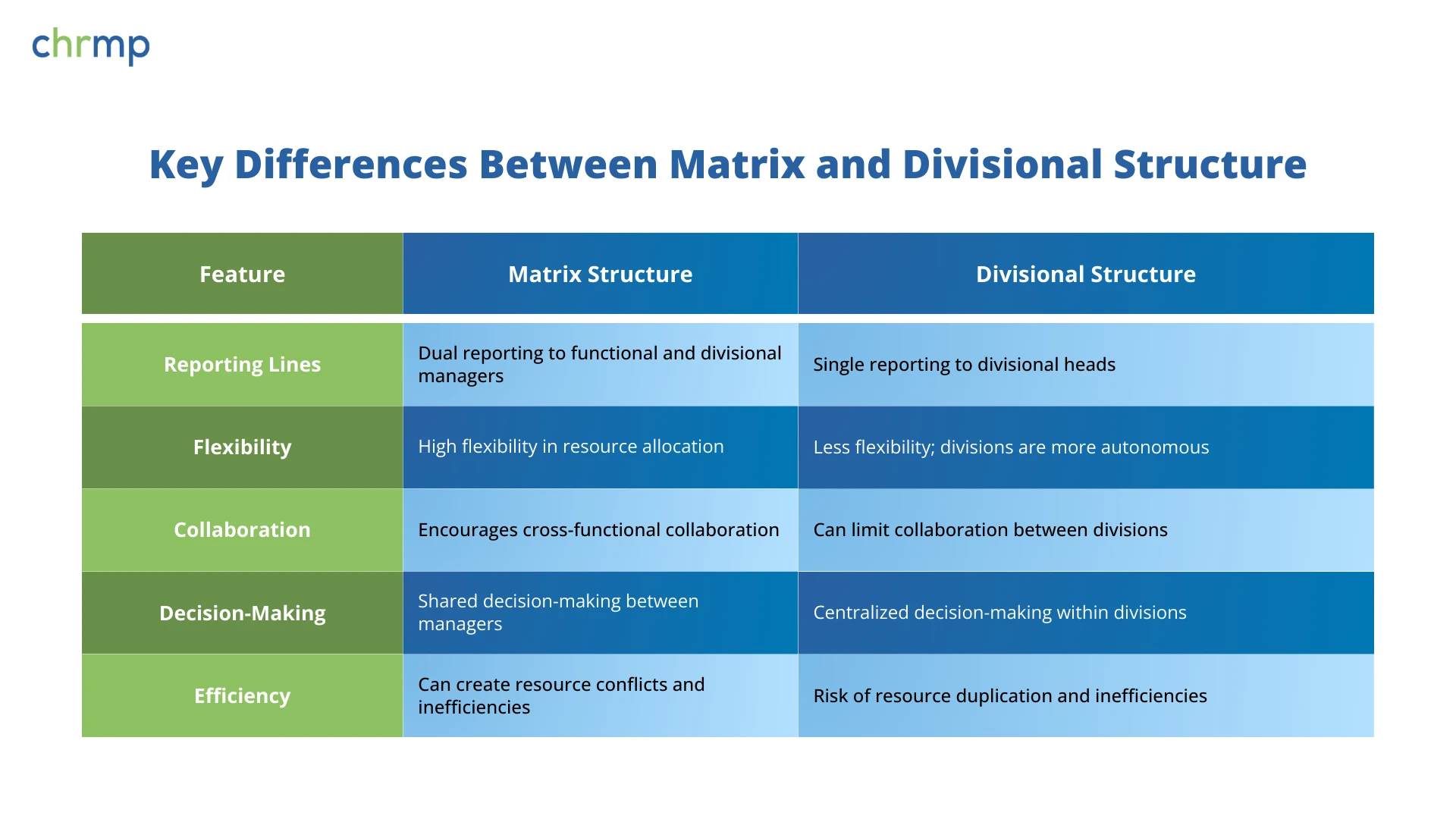
The basic difference between a matrix structure and a divisional structure lies in how employees are managed and the lines of authority within the organization. Let’s explore how each structure functions and the key distinctions between them.
In a matrix structure, the organization combines functional and divisional elements. Employees report to both a functional manager (responsible for specific expertise areas like HR or marketing) and a project or divisional manager (responsible for a specific product or market). The workflow is characterized by dual reporting relationships, where employees collaborate across functions and projects, often working on multiple initiatives simultaneously.
This setup is designed to promote flexibility, enhance resource sharing, and facilitate cross-functional collaboration, allowing the organization to adapt quickly to changing needs while leveraging expertise from multiple areas.
In a divisional structure, the organization is segmented into independent divisions, each focused on a specific product, market, region, or process. Employees within each division report directly to a divisional manager, who oversees the division’s operations and strategic direction. While divisions have autonomy over their functions, they are aligned with the broader company’s objectives.
The workflow within each division is self-contained, with decision-making authority primarily residing within the division, allowing for quicker responses to market changes and operational flexibility.
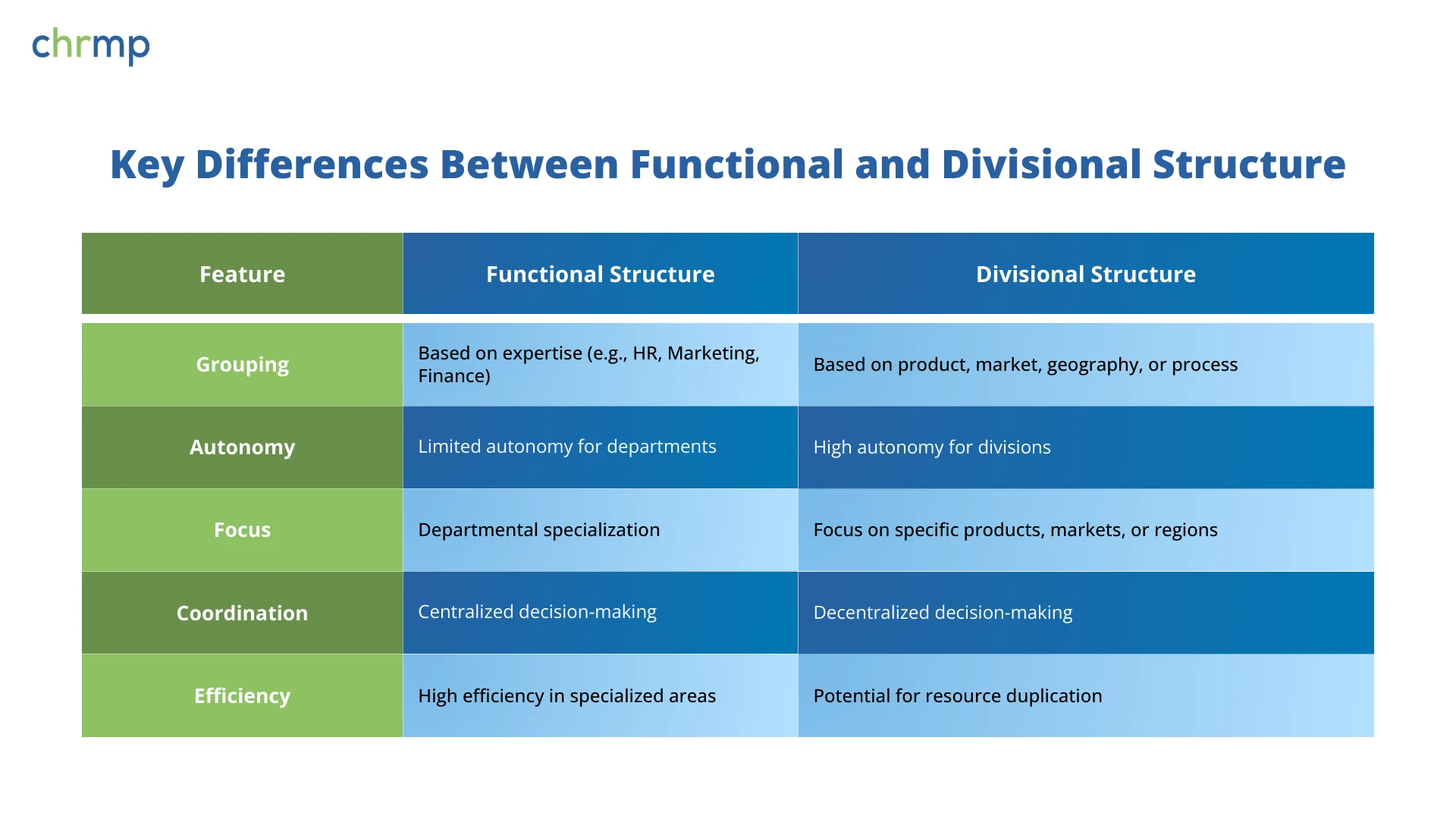
Several global leaders in diverse industries utilize the divisional organizational structure to streamline their operations and manage expansive product portfolios or market segments.
Here’s a closer look at some prominent companies that rely on the divisional structure:
If your company is growing rapidly, diversifying its products or services, or expanding into new markets, a divisional structure might be the right choice for you. This model offers the autonomy, flexibility, and specialization that can fuel your business’s growth while allowing each division to focus on its unique challenges and opportunities.
To determine if a divisional structure is the best fit, here are a few key factors to consider:
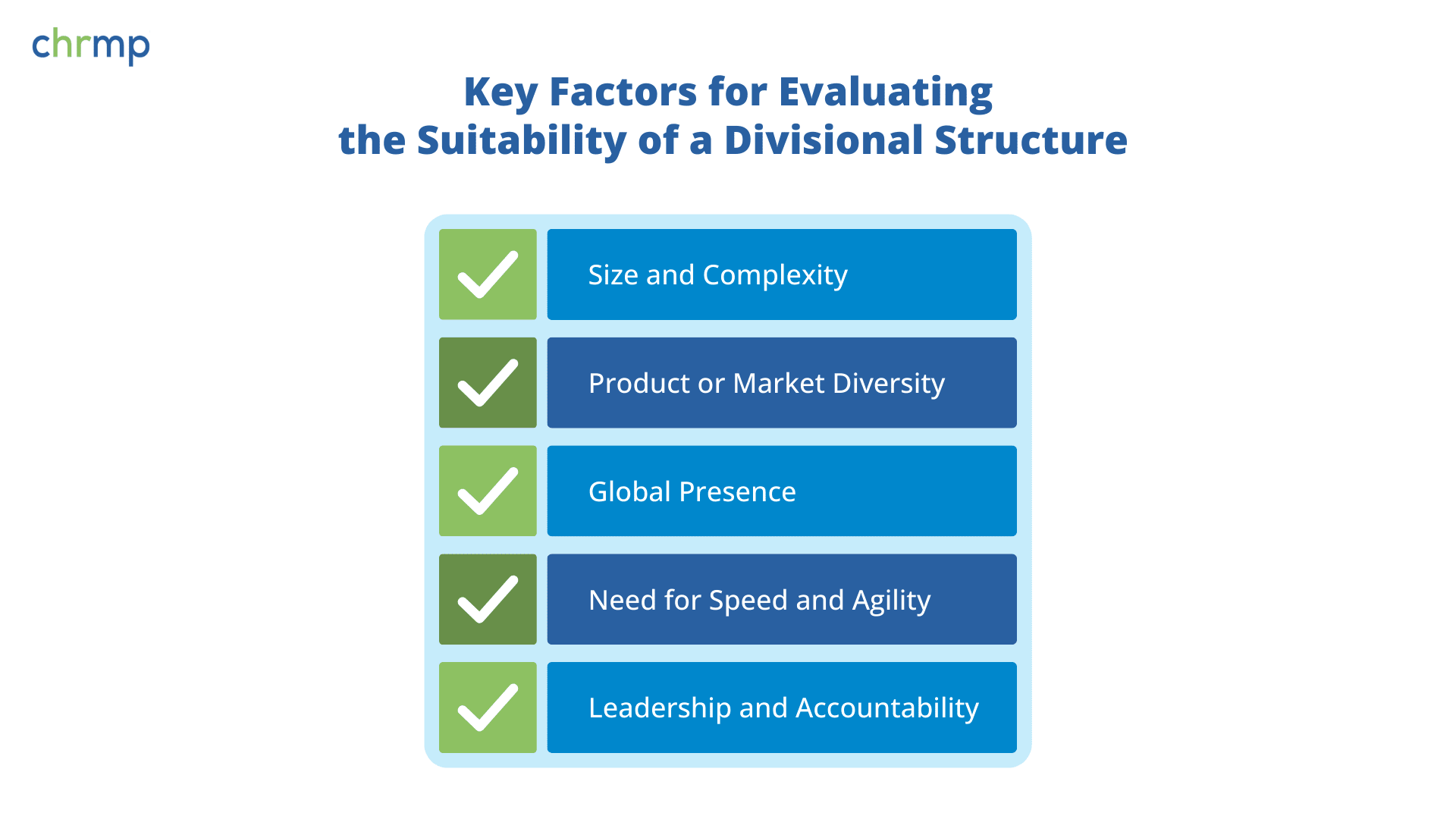
Larger, more complex organizations benefit most from divisional models. If your business has multiple product lines, serves several customer types, or operates in different regions, the divisional structure provides the flexibility and decentralization needed to manage such complexity effectively. It allows each division to focus on its specific area while aligning with the company’s overarching goals, resulting in faster decision-making and better performance at the divisional level.
If you offer a broad range of products or serve diverse markets, divisional structures help ensure that each unit gets the attention it deserves. By organizing around product categories, customer segments, or geographic areas, your company can tailor strategies to meet the unique demands of each market or product line. Whether you are launching a new product or entering a new market, each division can focus on what matters most to its customers, helping you stay competitive and responsive.
For multinational companies or businesses with regional strategies, divisions based on geography are incredibly useful. With distinct regional markets often requiring different approaches, a divisional structure ensures that each market has its own leadership and decision-making power. It empowers regional teams to quickly respond to local customer needs, cultural nuances, and market dynamics, all while still aligning with global corporate objectives.
If your business operates in fast-paced or competitive industries, a divisional structure can provide the agility required to make quick decisions and adapt to changes. Divisions have more control over their operations, which allows them to innovate faster, streamline processes, and adapt to shifting market conditions without waiting for approvals from a central corporate body. This rapid response can give your company a significant advantage in industries where time to market is critical.
If your company is looking to build strong leadership and clear accountability, a divisional structure offers a clear reporting system that holds divisional leaders responsible for the success or failure of their specific units. With their own resources and decision-making power, divisional heads are empowered to take ownership of their divisions, ensuring that they are driven to deliver results. This can foster a culture of accountability and ownership, motivating leaders to perform at their best.
Read: Mastering Organizational Structure: A Guide to Building a Successful Business Framework
As you consider the right organizational structure for your company, the Divisional Organizational Structure could provide the flexibility, accountability, and market focus needed for growth. Whether you’re focusing on business strategy, product innovation, or market responsiveness, this model can align your operations with your long-term vision.
Now is the perfect time to evaluate your organization’s needs and decide if a divisional structure is the right path forward. Start by assessing your company’s goals, market demands, and internal resources. Then, take action: Begin planning your organizational transformation today.
Don’t wait for change to happen—make it happen! Collaborate with your leadership team, and map out a strategy to implement a divisional structure that supports your growth trajectory. The future of your business is in your hands—ensure it’s built on a structure that drives success.
Yes, KFC operates a geographic divisional structure, with divisions in regions like North America, Asia-Pacific, etc.

© 2007-2025 CHRMP| All Rights Reserved | Powered by Ripples Learning & Research Private Limited
